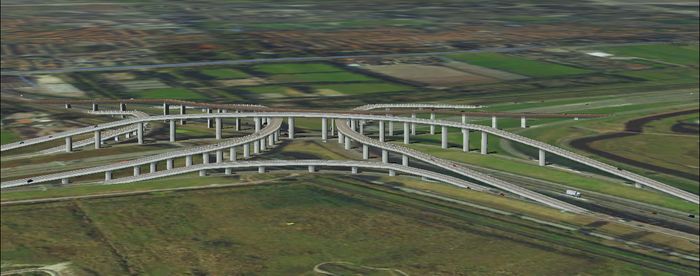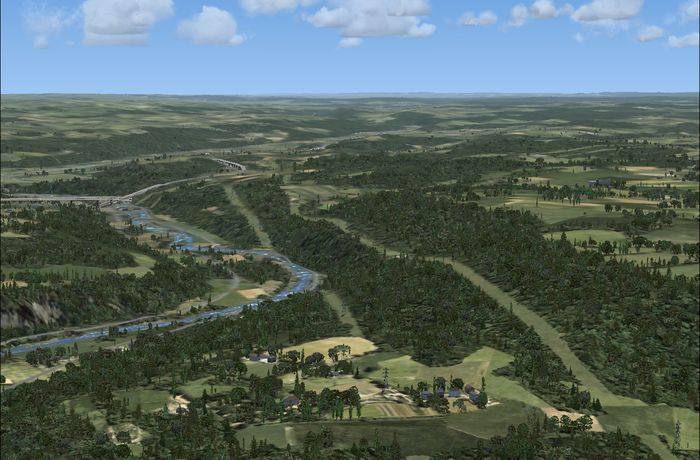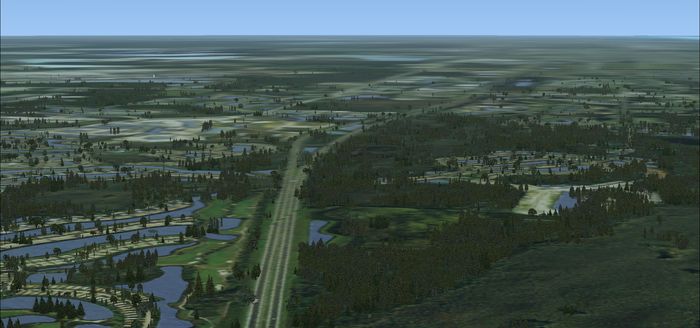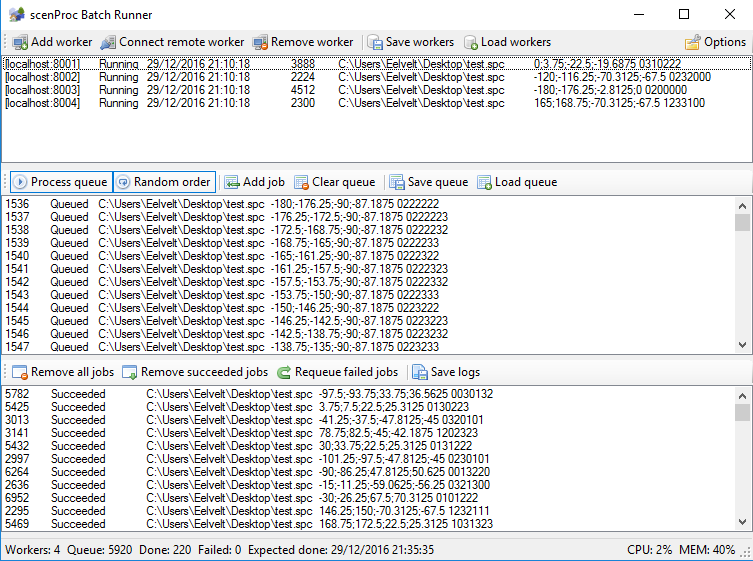 The end of 2016 is fast approaching, so it’s the time of the year to look back a bit on the last year and look ahead a bit to 2017 as well. For scenProc the last year has been very exiting, with a lot of ideas I had in my head coming to life. But I should also say directly that as users you haven’t seen much from this yet, because most of the new features are currently in a kind of alpha phase and are being tested in a project I’m involved with. In 2017 I hope that these new features will also start to move to the development release. Although I do not have a clear release plan for that in mind yet. But let me use this blog post to shed a bit of light on the possible future of scenProc, by describing some of the things I’m working on.
The end of 2016 is fast approaching, so it’s the time of the year to look back a bit on the last year and look ahead a bit to 2017 as well. For scenProc the last year has been very exiting, with a lot of ideas I had in my head coming to life. But I should also say directly that as users you haven’t seen much from this yet, because most of the new features are currently in a kind of alpha phase and are being tested in a project I’m involved with. In 2017 I hope that these new features will also start to move to the development release. Although I do not have a clear release plan for that in mind yet. But let me use this blog post to shed a bit of light on the possible future of scenProc, by describing some of the things I’m working on.
XML bridges
Currently scenProc can place XML scenery objects and effects for you. But I have been experimenting with placing XML bridges as well. The idea is that you use line vector data to generate such bridges automatically. The current results are quite interesting already, as you can see in the screenshot below.

Terrain vectors
A second area that I have been working on is the generation of terrain vector scenery using shp2vec. Since scenProc can already process geographical vector data the step to shp2vec is not that big. And using the filtering functionality of scenProc you can then select which data should be used for the different terrain vector types. Below is a screenshot of a test area in Luxembourg that has been populated with terrain vectors using scenProc.

Photoreal scenery
The main feature of scenProc has always been to generate autogen, but wouldn’t it be nice if you could generate the photoreal scenery as well? I have been working on exporting photoreal scenery using resample. Based on vector data scenProc can generate the water and blend masks for me and I have implemented basic colour corrections. I hope to do more colour correction stuff, for example for seasons or night versions. The image below is an example of a photo scenery made by scenProc (and autogen detected by scenProc).

Big area processing
The last area I’m working on is improvements for processing big areas. With Nantucket I did detection of vegetation, but wouldn’t it be cool to also detect the buildings? And Nantucket is “only” 120 km² in size. So how to scale things up if you want to process an area of let’s say 1500 times that size? I’m working on new features to run multiple scenProc instances in parallel to process such big areas and ideally I hope to distribute it over multiple machines as well. And of course the feature detection itself needs some optimisation to make it scale better. Below is a screenshot of the batch runner tool I’m working on for this parallel processing.

So as you can see there are a lot of interesting ideas that I have started working on and that will hopefully become reality in 2017. But I can’t promise when or in exactly which form the different features will end up in the development release. At least it shows in which direction I’m thinking.
 SceneryDesign.org
SceneryDesign.org
Hi Arno,
After some time I came back to scenProc (wanting to update autogen I made in 2015) and I was happy to see there were a number of new features in scenProc.
Your road map shows the tool will get even better 🙂 Thanks for that. Your decision to make it free is surely a big benefit for the community.
Just an idea – wouldn’t the xml stuff you are experimenting with (re the bridges) allow to place cables between electricity poles as well?
Regards,
Milan
Hi Milan,
I guess if we would define a custom bridge type that looks like a cable, we could use it for electricity poles as well. I never tried that 🙂
Arno
Hey milan
Can you please contact me
I want to include your objects in my finland night lights package
Djnigelcage@gmail.com
+353851303630 whatsapp
Hi Arno, any more news on these features please? 🙂
Hi Kevin, they’re still in development and I haven’t decided yet when and in which form to release them. Parts of them are being privately tested for a project I’m working on.
Hi Arno, it would be great to see the XML extrusion bridge feature in ScenProc, have you decided yet if you will release that?
It’s my plan to have it included in the next major update of scenproc.
Wow, great news, I’m really looking forwards to it! Thanks Arno, your tools really help getting GIS data into FSX, and they just keep getting better and better 🙂